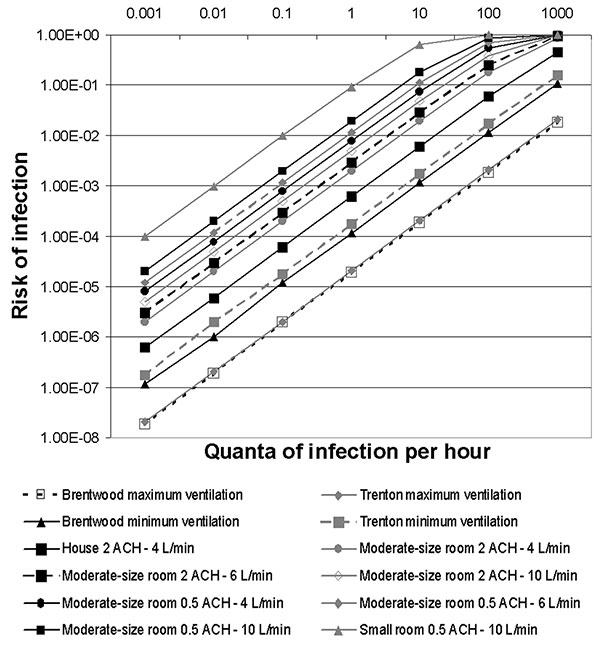Volume 10, Number 6—June 2004
Perspective
Airborne Infection with Bacillus anthracis—from Mills to Mail
Figure

Figure. Risk for airborne infection with Bacillus anthracis in various scenarios. Home and office exposures are for 1 hour, and postal facility exposures are for 8 hours; for postal facilities, the models assume a 14.6 L/min pulmonary ventilation rate with moderate work, comparable to the rate used to estimate inhaled doses in the Manchester study. ACH, air changes per hour.
Page created: February 22, 2011
Page updated: February 22, 2011
Page reviewed: February 22, 2011
The conclusions, findings, and opinions expressed by authors contributing to this journal do not necessarily reflect the official position of the U.S. Department of Health and Human Services, the Public Health Service, the Centers for Disease Control and Prevention, or the authors' affiliated institutions. Use of trade names is for identification only and does not imply endorsement by any of the groups named above.